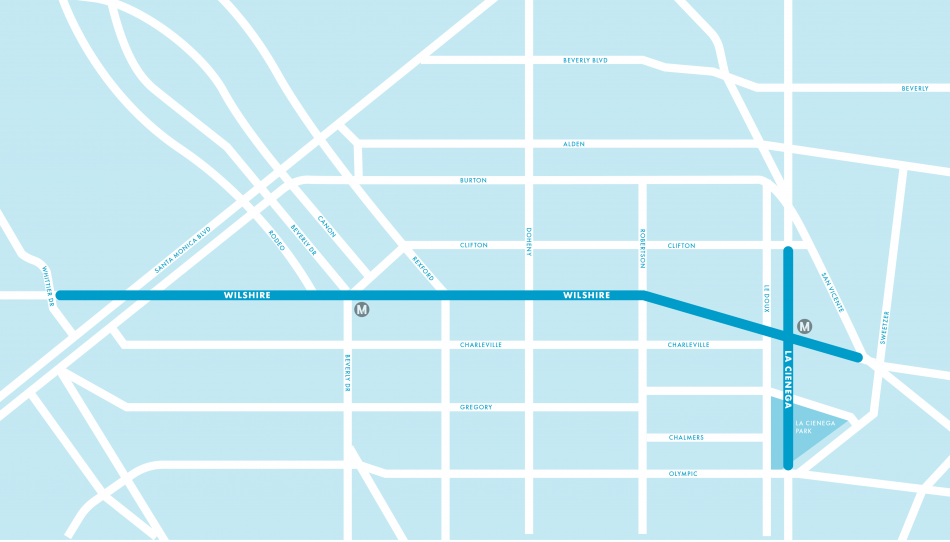In 2023, service on Metro's D Line will extend to a new station now under construction beneath the intersection of Wilshire and La Cienega Boulevards. Before that happens, the City of Beverly Hills is taking steps to address how pedestrians will travel to and from the subway stop.
Earlier this year, the City kicked off community outreach to develop a new streetscape plan for segments of both Wilshire and La Cienega. The project is intended to identify potential locations for amenities such as street furniture, bus shelters, landscaping, wayfinding signage, and public art.
A presentation given at a virtual charrette in May observes that both streets are lined with architecturally significant buildings, public art, and open space. However, both Wilshire and La Cienega are designed to facilitate the flow of automobile traffic - often at the expense of pedestrians and transit passengers.
Participants in the charrettes have requested new features such as shade trees and pedestrian-scale lighting, according to a staff report to the Beverly Hills Architectural Commission. Additionally, participants expressed concerns with the pedestrian environment along Wilshire and La Cienega due to proximity to fast-moving traffic, and discussed "the need to balance the many transportation modes," of both corridors.
Transit patronage along the Wilshire corridor is already high due to the popular 20 and 720 bus lines - despite a lack of dedicated bus-only lanes and a paucity of seating and shelters at stops. The D Line extension - which will carry an estimated 62,000 daily riders by 2028 - is expected to increase the need for pedestrian and transit infrastructure in the area.
The Wilshire and La Cienega streetscape plans are the opening salvo larger campaign called Connecting Beverly Hills, which will establish new streetscape design standards for commercial boulevards throughout the city.
For more information, see the project's official website.
- Beverly Hills (Urbanize LA)








